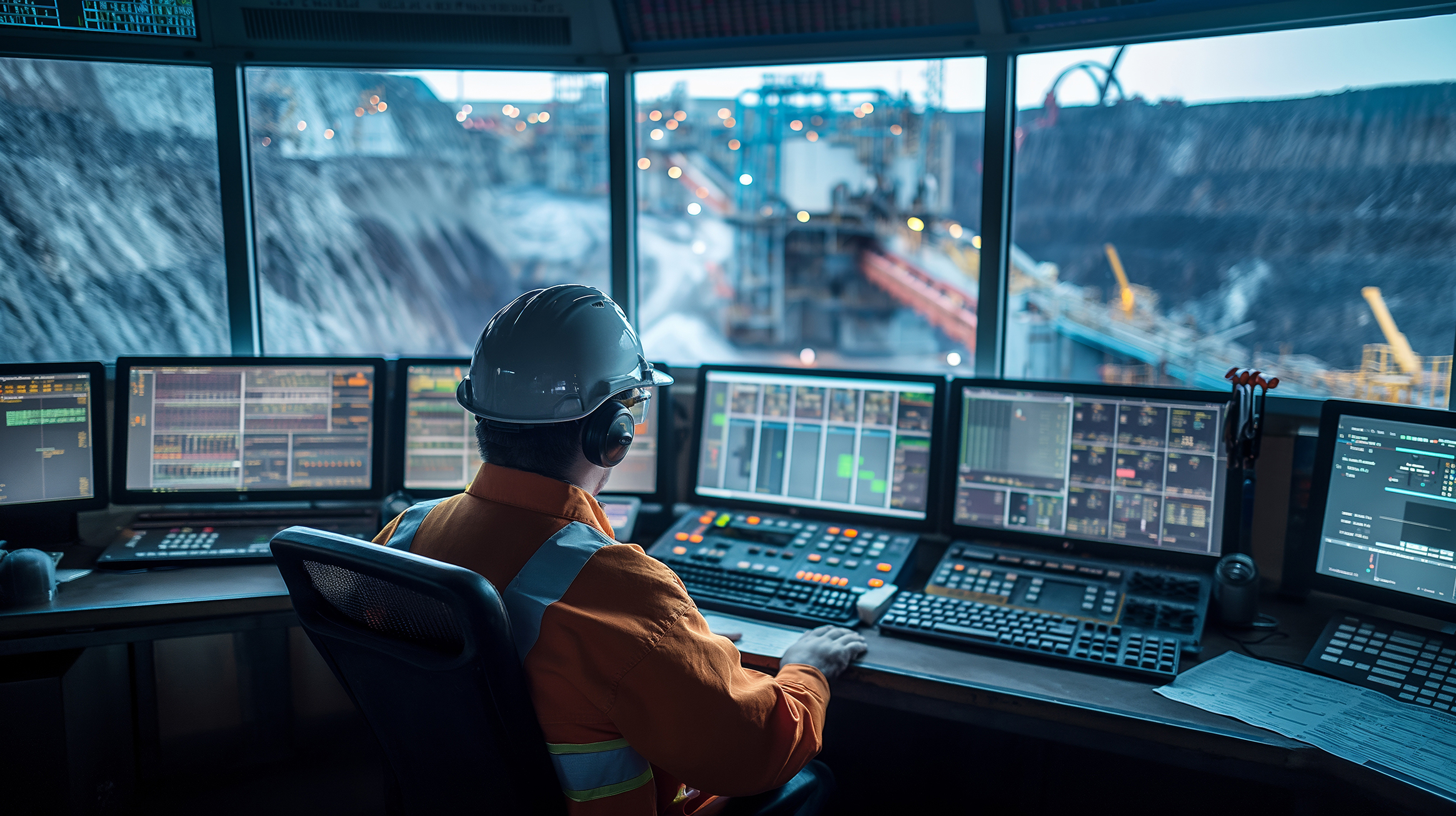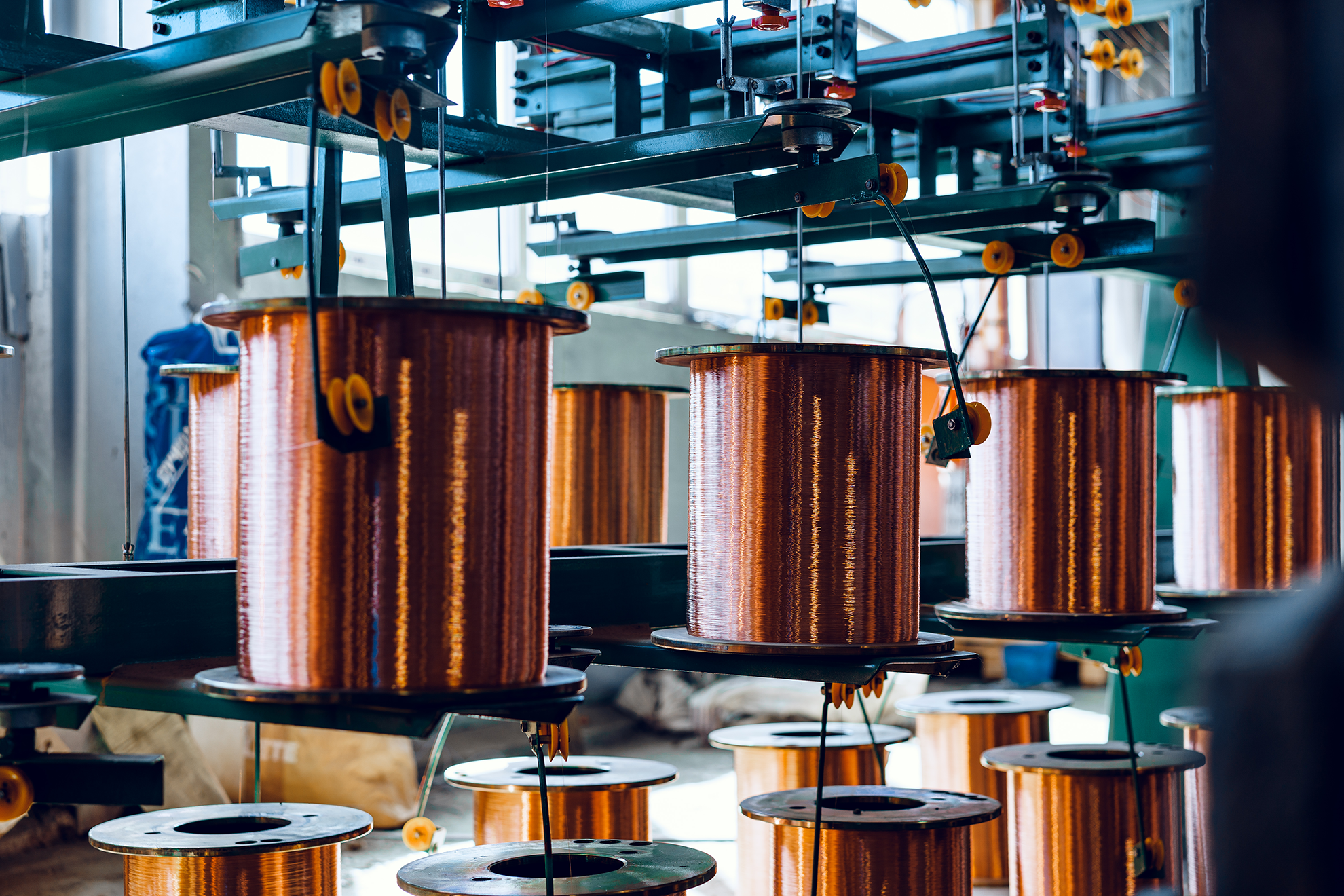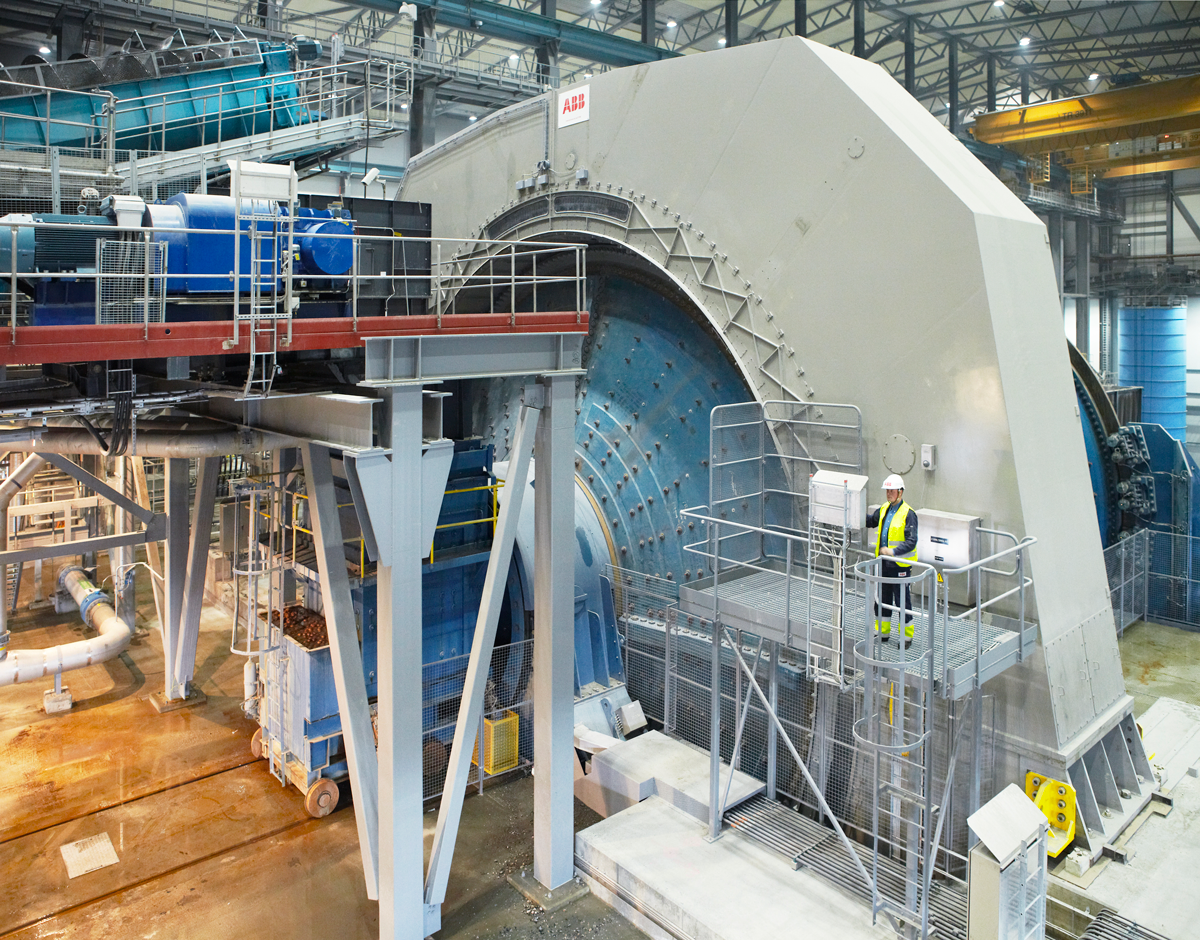Grinding it out: Making Real Progress in minerals processing
Driving some of the world’s largest mining equipment in an increasingly sustainable way is front of mind for operations management teams, explains Wilson Monteiro, Global Business Line Manager for Gearless Mill Drives, ABB.

Mining and minerals processing is a kaleidoscope of change, part of an industry traditionally known for sticking with what it knows, developing year-on-year into a modern, fit-for-the-future operation. Not dissimilar to the beads within a kaleidoscope, the industry’s ore is processed within a large grinding mill using all manner of associated equipment and infrastructure 24 hours a day, 7 days a week. Such technologies are among some of the largest capital investments for mining companies and the energy requirements for this daily grind are in the millions of dollars per day. This work is not only full of risk and challenges, but is also absolutely essential for everybody on the planet. Without a supply of minerals and metals to meet the demands of manufacturing, construction and consumer technology, the standard of life would change dramatically and there would be no energy transition.
Mining companies are facing rising exploration costs, volatile market prices for hard rock metals like iron, copper, gold, silver, zinc and nickel, and increasingly deeper mining, low-grade ores and remote environments, some in extreme, uninhabitable locations. Productivity remains alongside safety as one of the highest priorities – but sustainability is their equal. Mining and its supply chain is on a journey to do more with less; double, triple and quadruple the volumes of metals and minerals extracted from ore while eventually eliminating fossil fuels and reducing energy and water resources. Technology leadership and development is needed.
Solutions that tackle these issues need to ensure equipment operates efficiently and reliably, with minimal intervention from the operators. This article will explore the opportunities and the hurdles towards making real progress in sustainability through technology and expertise. It will take a look at the key technology in ABB’s arsenal, the Gearless Mill Drive (GMD), and its critical role in literally driving mineral processing operations towards a more sustainable future.
Doubling production, doubling down on sustainability
Looking at the copper market as an example, it is projected that demand for this commodity will double to 50 million metric tonnes per annum by 2050. For context, this means that in the next years we have to somehow, somewhere in the world, create more than two times the capacity of the top two copper producing countries today, Chile (circa-5 million metric tons p/a) and Peru (circa-3 million metric tons p/a), with all of their established mining infrastructure and equipment. This effort will take everybody involved in the industry working together, from the investment community to miners, machine builders and technologists.

ABB was the pioneer in producing the essential GMD technology for powering large grinding mills. Each GMD takes many months to build and install in a mine, so the urgency to replicate the success story of the aforementioned South American nations is paramount. As a technology that has evolved since the late 1960s, ABB’s GMD is now used in 23 countries, powering the largest grinding mills with a visionary gearless design, combining production efficiency with maximum uptime and lower maintenance needs.
ABB’s latest white paper, ‘Unleashing the power of gearless technology: Enhancing sustainability and operational efficiency in the mining sector,’ recognises the importance of the GMD to the energy transition, and its place in delivering real progress as soon as is practically possible. It explores key areas such as: challenges facing mining organisations from demand to decarbonisation; the differences between the key types of grinding mill drives; common misconceptions around these competing technologies; how GMDs offer a safer, more reliable solution; the key role of digitalisation; and the importance of collaboration in achieving sustainability goals. It also features valuable insights from a range of industry experts, as well as real-world success stories from two mining companies: Boliden and Atalaya Mining.
One of the key findings in the report, based upon extensive testing of ABB’s current installed base of GMDs, is the high level of efficiency they provide. GMDs can be up to 3.6% more energy efficient than Ring-Geared Mill Drives, reducing energy consumption and operational costs of the mine. A 3.6% efficiency across ABB’s GMD installed base equates to 195,000 tonnes of CO2 – the equivalent of taking 89,000 cars off the road. Even a conservative 2% of increased efficiency equates to 106,000 tonnes of CO2 saved, or 49,000 cars taken off the road.
Driving for more ore
Increasingly making such savings in efficiency is crucial for continued moves towards sustainability. Humanity’s demand for critical minerals is growing thanks to the twin drivers of increasing digitalisation and the energy transition. Meanwhile, ore quality is declining, requiring more ore to be mined to produce the same amount of metal. This challenge is further compounded by growing pressure to reduce the environmental impact of mining. Addressing all of these simultaneously is a challenge of enormous proportions.
This is why ABB’s new white paper investigates how these conflicts are impacting the copper industry. Copper is vital for the energy transition and demand is predicted to double by 2050. Yet today, roughly only 0.5% of ore can be converted to copper, down from typical historical levels of about 1%. To maintain the same levels of copper production, today’s mines must process double the amount of ore. However, increasing mining outputs without supporting sustainability initiatives could contribute more emissions than copper can negate.
The report details how technology will play a vital role in overcoming these challenges. As GMDs have fewer mechanical parts, they have been found to be more energy efficient, more reliable and easier to maintain. These characteristics mean it is less energy intensive while having more uptime, delivering the twin benefits of a reduced carbon footprint and increased productivity.


Turning to the future

At ABB and across the mining industry, it is recognised that the only way to produce more critical minerals such as copper while also minimising the environmental impact of mining operations is through the use of GMDs. These drive systems have proven their value across industries for more than 50 years and have demonstrated the potential to deliver a more environmentally friendly, efficient and reliable grinding operation than would be possible with alternative technologies. The whitepaper shows GMDs to be the system of choice for mines looking to a more sustainable and productive future.
ABB’s commitment to real progress means supporting industries to improve sustainability across value chains. It’s a conversation that will continue to have resonance to the mining industry, where businesses are under more pressure than ever to evolve and refine practices to ensure a better future. Such sustainability in mining can be broken down into five key pillars: environmental management, social responsibility, economic development, use of technology, and regulation and governance. This means reducing the environmental impact of mining operations while also considering the welfare and rights of local communities and contributing to the long-term economic development of the surrounding areas. We must all work quickly and effectively to ensure what we see through a long-term lens becomes a reality for the world.
To learn more about the future of sustainable mining, as well as ABB GMD’s role in supporting this transition, read our latest interactive white paper.












